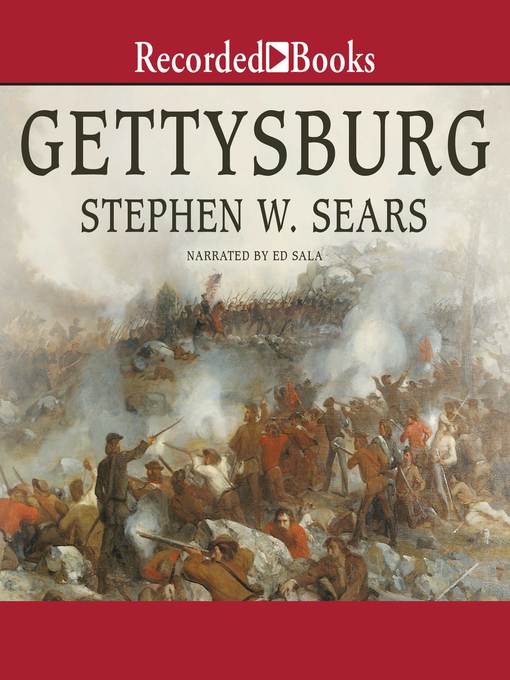
Gettysburg
کتاب های مرتبط
- اطلاعات
- نقد و بررسی
- دیدگاه کاربران
نقد و بررسی

History is studied passively, moving backwards from conclusions, according to former House Speaker Newt Gingrich, who wrote and reads the introduction. Active histories--like this one--dramatize the facts as we know them by changing the ending. What if Lee had flanked the dug-in Union troops at Gettysburg? "General Longstreet, what is your proposal, suh?" asks Lee when Pete famously questions plans for Pickett's ruinous charge. In real life, Lee didn't listen. Meticulously researched, the book is intellectually gratifying. The realism is marred, however, by an antique, almost Roman, vision of glorious death. "My fault, all my fault," says Meade in his last charge. Tom Stechschulte gives a stunning performance, Southern and courtly in one passage, Northern and practical in the next. B.H.C. (c) AudioFile 2004, Portland, Maine

Stephen Sears, who has several other Civil War books to his credit, retells the story of Gettysburg, the largest battle of the war. His story not only encompasses the events of those fateful three days but also the entire campaign from the end of the Chancellorsville campaign to Lee's escape back across the Potomac. His analysis gives context to the battle, and it's refreshing to realize that the Yankees truly had something to do with the Confederate defeated. Sala's folksy voice is winsome. Slow and deliberate in delivery, he adroitly uses inflection and pauses to give an engaging performance. M.T.F. (c) AudioFile 2004, Portland, Maine

April 7, 2003
An outstanding battle study by the author of Chancellorsville, this comprehensive narrative will lend extra impact to the 140th anniversary this July of the climactic battle of the Civil War. Sears casts his net wide, beginning with Lee's meeting with Davis in May 1863, where he argued in favor of marching north, to take pressure off both Vicksburg and Confederate logistics. It ends with the battered Army of Northern Virginia re-crossing the Potomac some two months later, a near-run on both sides as Meade was finally unwilling to drive his equally battered Army of the Potomac into a desperate pursuit. In between is the balanced, clear and detailed story of how 60,000 men became casualties, and how the winning of Confederate independence on the battlefield was put forever out of reach. The author generally is spare with scapegoating, although he has little use for Union men Dan Sickles (who advanced against orders on the second day) or Oliver Howard (whose Corps broke and was routed on the first day), or Richard Ewell of the Confederacy, who decided not to take Culp's Hill on the first night, when that might have been decisive. Sears also strongly urges the view that Lee was not fully in control of his army on the march or in the battle, a view borne out in his gripping narrative of Pickett's Charge, which makes many aspects of that nightmare much clearer than they have been before. This book is not the place to start a study of the campaign, but it is absolutely indispensable for the well-versed. (June 30)Forecast:A summer display in time for the battle's 140th anniversary on July 4, 5 and 6 could draw on James McPherson's
Hallowed Ground: A Walk at Gettysburg (Forecasts, date TK) and Robert Clasby's illustrated
Gettysburg: You Are There (Forecasts, Mar. 3), along with this book from former
American Heritage editor Sears.

























دیدگاه کاربران